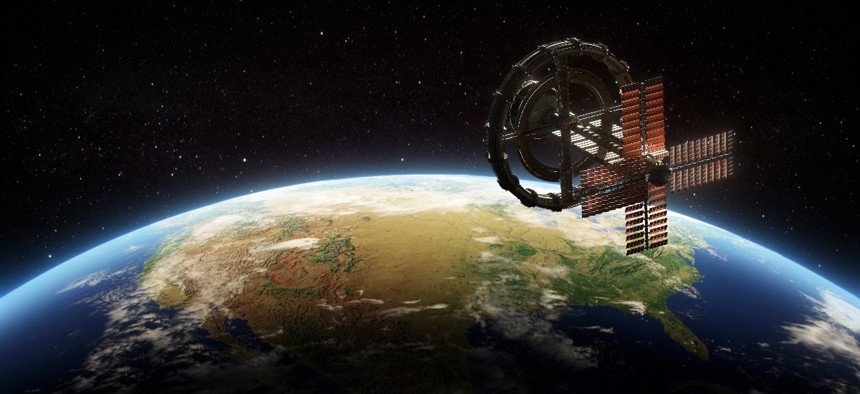NASA Wants to Make Sure Commercial Space Destinations Have All the Right Amenities

imaginima/Getty Images
The space agency wants to ensure commercial space stations have the rules and supplies to support government astronauts.
The U.S. space agency is giving up its time-share in low Earth orbit—the International Space Station—by the end of the decade and is working with industry partners to ensure new commercial destinations have all the necessary amenities to make future trips worthwhile.
The ISS—the first component of which was launched into orbit in 1998—is nearing the end of its life, and NASA and its international partners plan to decommission the space station by 2030. At that time, NASA plans to use several commercial “visiting vehicles” to help push the ISS out of orbit and strategically crash it into an uninhabited part of the Pacific Ocean known as Point Nemo.
But the end of the ISS does not mean the end of NASA missions in low Earth orbit. The agency will continue to send crews just beyond the atmosphere to conduct low-gravity research and assist with ongoing missions to the Moon and Mars.
As with other efforts to shift technology-heavy government operations to commercial suppliers, NASA is working with industry to develop commercial low Earth orbit destinations, or CLDs—privately owned and operated space stations.
Privatized space destinations are already in development, including a NASA-backed project led by commercial partner Axiom Space. Through a competitive bid, Axiom was awarded use of a docking port on the ISS that is being used to construct “a series of commercial modules that will eventually detach to become a LEO free-flying destination,” according to the ISS transition report.
NASA has also contracted with three companies—Blue Origin, Nanoracks and Northrop Grumman Systems Corporation—to build independent space stations that will go directly into low Earth orbit when completed.
As this work continues, NASA is seeking feedback on two foundational documents outlining what the U.S. government wants out of these space stations: roadmaps for ensuring these destinations have the right amenities to attract their biggest customer.
Specifically, NASA is gathering information from the larger community on two points: the rules and standards by which the destinations will be governed, tentatively outlined in the Concept of Operations Plan; and operational needs—or tools and services that will make those destinations worthwhile—outlined in the Capabilities of Interest and Resource Needs document.
NASA is interested in hearing from the industry community about the language used in both documents—and whether it “conflicts or impacts your current plans”—and which points, if any, need further clarification.
The request for information notes these are two separate considerations, and respondents can offer input on either or both.
The Concept of Operations Plan deals with how these destinations will be managed, including an enforceable “crew code of conduct, protection of intellectual property rights” and clear rules about who has jurisdiction over disputes and potential criminal matters, “in accordance with U.S. government laws and regulations, and international law,” the plan states.
Commercial operators are also expected to handle all aspects of traveling to the LEO destinations, as well, including pre-flight training and Earth-side transportation for crew and cargo. The ConOps Plan also includes requirements for in-flight amenities “such as power and data services, provision of consumables and common use equipment and tools.”
“A hallmark of the CLD concept is that the CLD partner takes primary ownership of and responsibility for the majority of the end-to-end mission activities,” the plan states.
Once the crews arrive, NASA wants to ensure the destinations will have the right facilities to make the trip worthwhile, as laid out in the Utilization Plan.
Through previous conversations and working groups, NASA has already identified several capabilities scientists and researchers will need in orbit, including equipment like centrifuges, 3-D printers, pressure chambers and microscopes.
The document includes a lengthy list of other general capabilities of interest, such as an integrated data architecture for computing and collaboration; small satellite deployment; an airlock; external robotics; secure communications to and from Earth; temperature-controlled storage; wearable biometric devices like Fitbit; a vacuum oven and many more. (No language yet requiring cantinas or holodecks.)
As part of this feedback effort, NASA wants to hear from industry about their ability to provide these capabilities and how they might overlap with other non-NASA residents.
The agency is holding a virtual meeting on Feb. 23 to give more information and plans to schedule one-on-one meetings with interested parties after April 14.
Responses to the RFI are being accepted through March 30.




